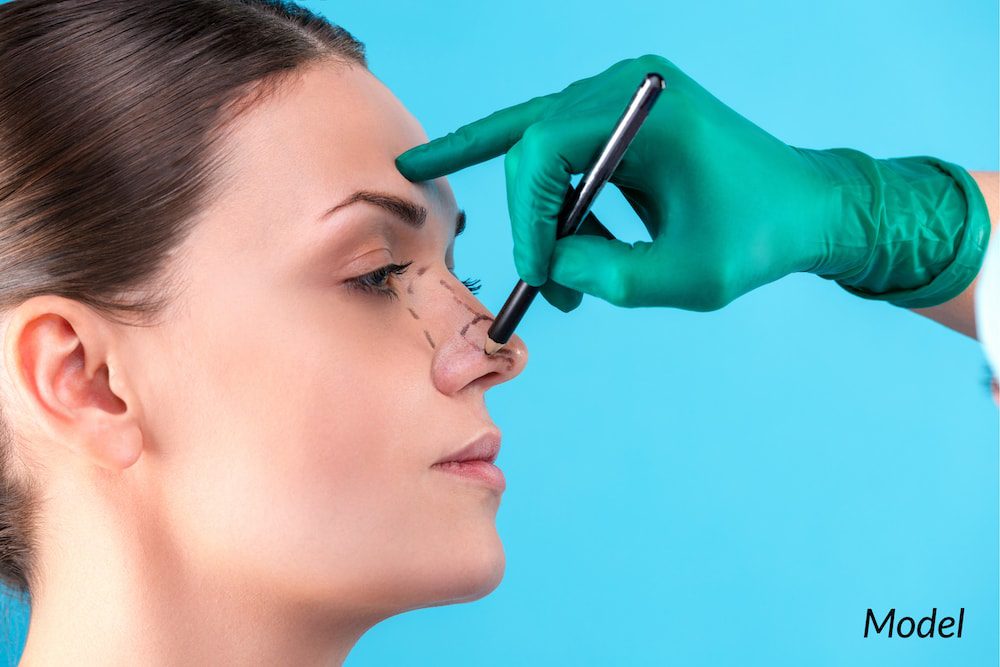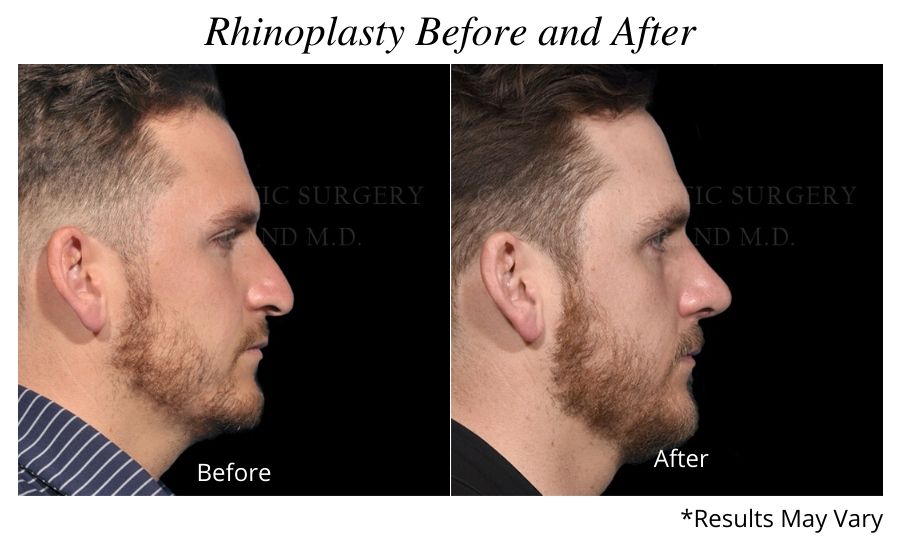What Should I Know About Revision Rhinoplasty?
Posted February 20, 2020 in Rhinoplasty
6 Minute Read
Table of Contents
Is a Revision Rhinoplasty More Difficult Than Initial Rhinoplasty?
Who Is a Good Candidate for Revision Rhinoplasty?
Will I Need Any Special Grafting for Revision Rhinoplasty?
What Should I Look for In a Revision Rhinoplasty Surgeon?
Rhinoplasty (or nose surgery) is often a life-changing procedure. For some patients, correcting their nose allows them to appreciate themselves more deeply, finding self-confidence that was once out of reach. For others, rhinoplasty may be a way to repair damage to the nose or correct irregularities that may cause trouble breathing.
Ideally, rhinoplasty should improve one’s circumstances and quality of life. Still, rhinoplasty is a surgery that requires nothing but expert execution to avoid future revision surgery.

The nose is a nuanced structure. Most surgeons will tell you that nose reconstruction surgery (rhinoplasty) is arguably the most complicated surgery in the field.
Small modifications in proportion can scale to significant differences in a patient’s appearance. Additionally, rhinoplasty involves carefully altering the diverse mix of tissues, cartilage, nasal bones, and skin that make up the nose while maintaining the nose’s function so that patients can properly breathe to their full capacity.
This delicate balance between form and function may be the ultimate pitfall for inexperienced surgeons, and patients are often dissatisfied with their initial rhinoplasty for one or both factors. Revision rhinoplasty addresses these missteps for any patient who has undergone an unsuccessful rhinoplasty.
What Is Revision Rhinoplasty?
For a surgeon, revision rhinoplasty is a much more challenging procedure to perform than a primary (initial) rhinoplasty. It is also challenging to determine how a person will heal from this procedure. Revision rhinoplasty is uniquely designed to correct issues created by a previous rhinoplasty or address issues that were not previously improved.
Depending on your surgeon’s examination during a consultation, patients may require either the open or closed techniques. Open techniques involve a small hidden incision in the tissue between your nostrils, while closed techniques use internal incisions. Bone and cartilage will be reshaped according to a patient’s needs, with additional cartilage being taken from areas like the ears, ribs, or septum in order to restructure the nose. Some revision rhinoplasty surgeons like Dr. Ramos now use a special rib cartilage allograft to avoid any pain and incisions from harvesting cartilage.
Is a Revision Rhinoplasty More Difficult Than Initial Rhinoplasty?
Revision rhinoplasty is technically more challenging for a surgeon, particularly because the scar tissue and swelling from the previous rhinoplasty can become an obstacle for revision techniques, limiting the outcome.
During an initial rhinoplasty there was likely a significant alteration of the original anatomy of the nose, making it difficult to reposition or repurpose cartilage and bone that has already been altered or even removed. In addition, surgeons may not have a full assessment of what was done to the nose until it is accessed during surgery.
It is for these reasons that it is extremely important for any rhinoplasty (initial or revision) to be done by a surgeon who is an expert in these procedures.
Who Is a Good Candidate for Revision Rhinoplasty?
Patients may be good candidates for revision rhinoplasty if they continue not being satisfied with the outer appearance of their nose or the functional aspects, such as breathing.
Patients may be advised to wait for their results to heal before considering a revision (for at least one to two years), as internal swelling can cause a significant change in the appearance of the nose. Good candidates should have realistic expectations if they are looking to achieve cosmetic results that are more fulfilling than those of their prior rhinoplasty.
Patients may also be good candidates for revision rhinoplasty if they suffer from the following internal or external issues:
- Loss of too much cartilage: An inexperienced surgeon may remove too much cartilage from the bridge or the nostrils. This act can distort the bridge or even collapse the nostrils and can drastically affect the appearance of the nose. Revision rhinoplasty can rebuild the bridge or nasal tip by using cartilage from donor areas of the body.
- Loss of too little cartilage: This can cause the nose to protrude downward or cause the nose to appear overly full. A surgeon who improperly assesses the relationship between nasal structures may produce this outcome. Revision rhinoplasty can restore the bridge and tip of the nose by removing excess cartilage and supporting the nasal tip.
- Deviated septum: This can persist after an initial rhinoplasty or be caused by improper healing. A deviated septum can cause a crooked nose as well as impair proper breathing.

Will I Need Any Special Grafting For Revision Rhinoplasty?
In revision rhinoplasty, it is sometimes unclear what was done in previous rhinoplasty surgery until the nose is reopened. Often, cartilage from the nasal septum is removed during initial rhinoplasty. Because of this, surgeons may have to harvest cartilage from other areas of the body.
Harvesting sites may be from the ear (not affecting the ear appearance) or rib cartilage. Experienced revision rhinoplasty surgeons like Dr. Ramos often use a special rib cartilage allograft to avoid any pain and incisions from harvesting cartilage.
What Should I Look For In a Revision Rhinoplasty Surgeon?
Patients seeking this procedure should select a skilled and knowledgeable surgeon who specializes in revision rhinoplasty.
Due to the complex anatomy of the nose, extensive experience in the field of rhinoplasty is paramount to avoid a suboptimal outcome.
The initial consultation with a revision rhinoplasty surgeon is one of the most important parts of the procedure. It allows clear and transparent communication between a patient and their surgeon, allowing them to obtain the best result possible.
Interested in Learning More?
If you are interested in learning more about initial or revision rhinoplasty, contact Careaga Plastic Surgery by calling (305) 960-7511 or by filling out our online contact form.
Dr. Ramos is a rhinoplasty expert for men and women in South Florida.
